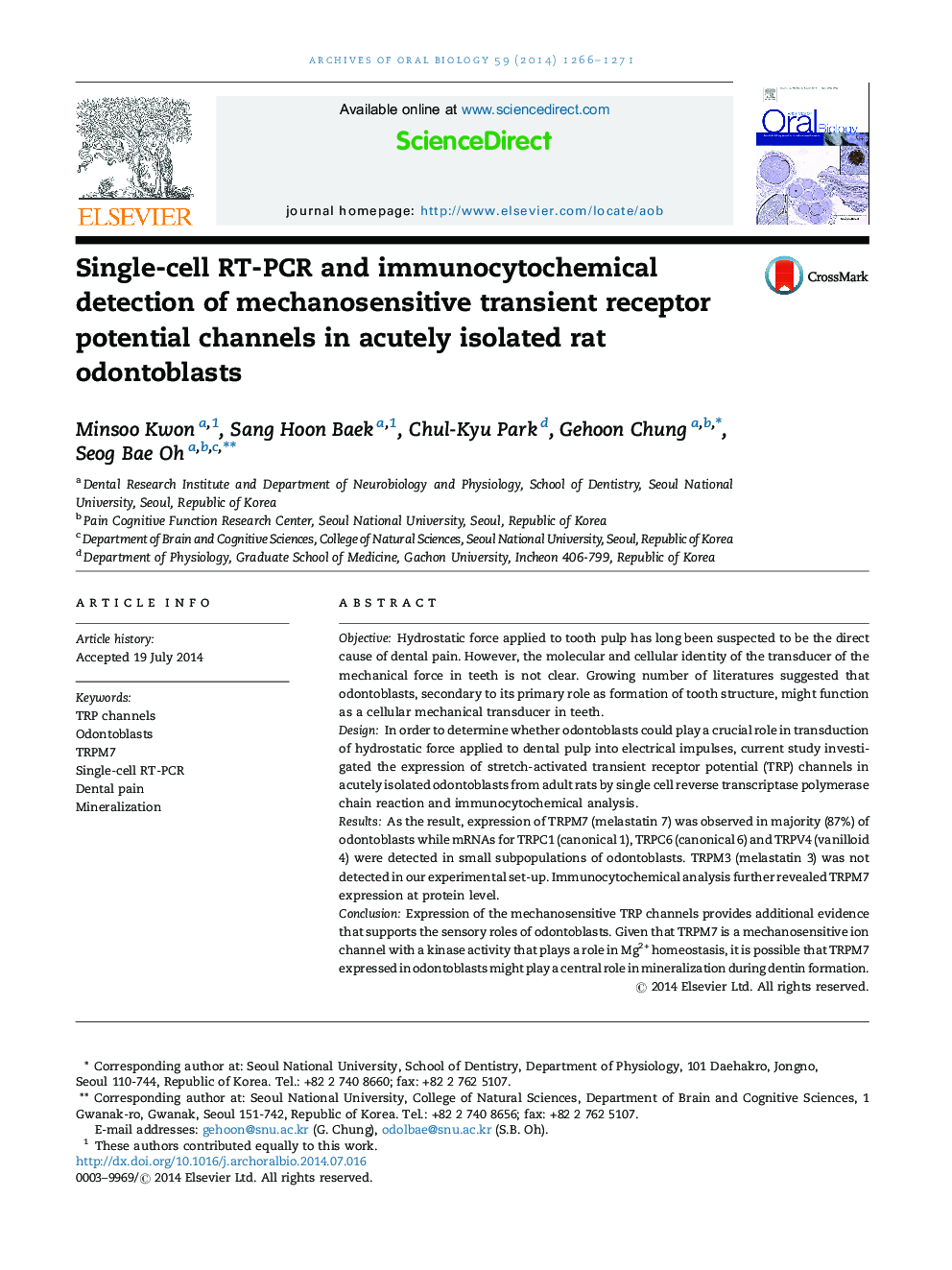| Article ID | Journal | Published Year | Pages | File Type |
|---|---|---|---|---|
| 6051120 | Archives of Oral Biology | 2014 | 6 Pages |
â¢TRPM7 is detected in majority of acutely isolated rat odontoblasts.â¢TRPC1, TRPC6 and TRPV4 are detected in subpopulation of rat odontoblasts.â¢TRPM3 is not detected by single cell RT-PCR analysis of rat odontoblasts.
ObjectiveHydrostatic force applied to tooth pulp has long been suspected to be the direct cause of dental pain. However, the molecular and cellular identity of the transducer of the mechanical force in teeth is not clear. Growing number of literatures suggested that odontoblasts, secondary to its primary role as formation of tooth structure, might function as a cellular mechanical transducer in teeth.DesignIn order to determine whether odontoblasts could play a crucial role in transduction of hydrostatic force applied to dental pulp into electrical impulses, current study investigated the expression of stretch-activated transient receptor potential (TRP) channels in acutely isolated odontoblasts from adult rats by single cell reverse transcriptase polymerase chain reaction and immunocytochemical analysis.ResultsAs the result, expression of TRPM7 (melastatin 7) was observed in majority (87%) of odontoblasts while mRNAs for TRPC1 (canonical 1), TRPC6 (canonical 6) and TRPV4 (vanilloid 4) were detected in small subpopulations of odontoblasts. TRPM3 (melastatin 3) was not detected in our experimental set-up. Immunocytochemical analysis further revealed TRPM7 expression at protein level.ConclusionExpression of the mechanosensitive TRP channels provides additional evidence that supports the sensory roles of odontoblasts. Given that TRPM7 is a mechanosensitive ion channel with a kinase activity that plays a role in Mg2+ homeostasis, it is possible that TRPM7 expressed in odontoblasts might play a central role in mineralization during dentin formation.
